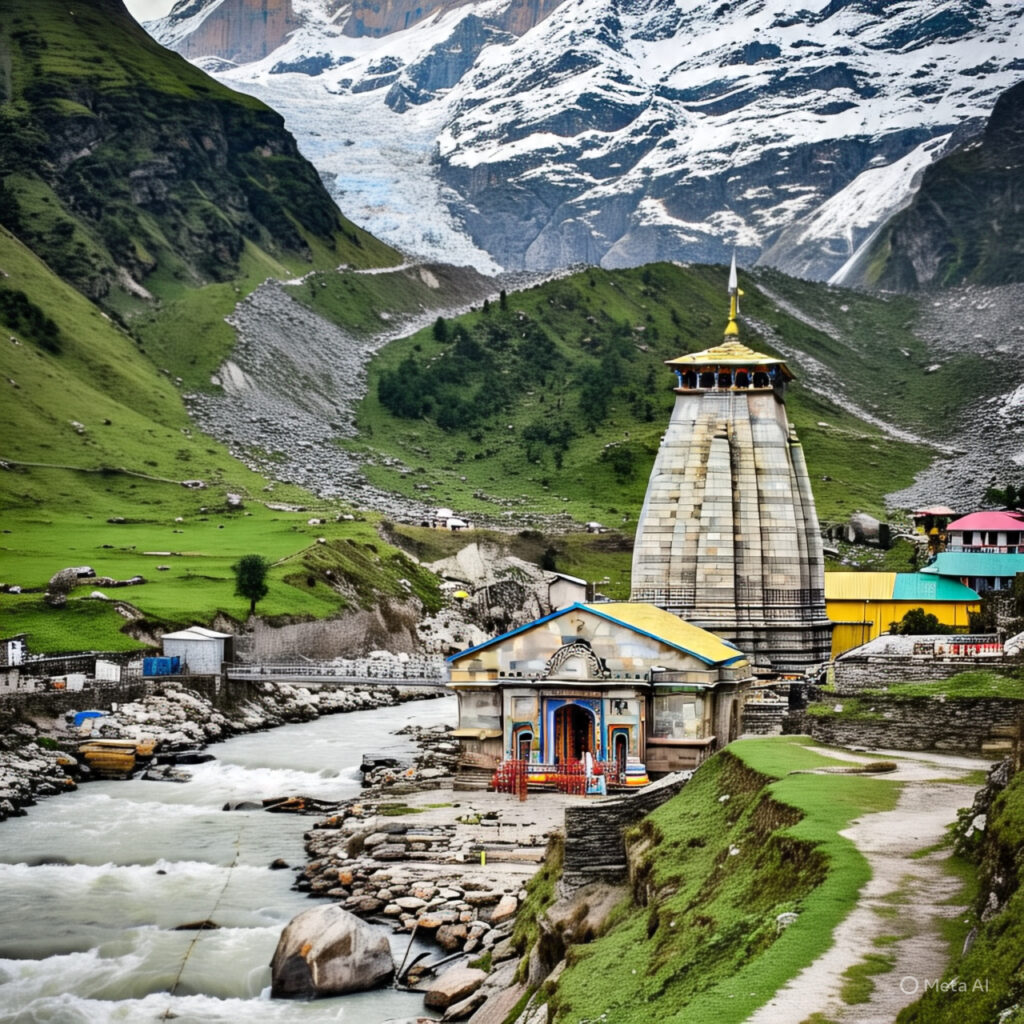Discover the most scenic stops to explore during your Do Dham Yatra, from serene valleys to majestic temples. Enhance your spiritual journey with breathtaking views and unforgettable experiences.
The Do Dham Yatra, encompassing the revered sites of Kedarnath and Badrinath, is not only a journey of deep spiritual significance but also a visual delight. The route is dotted with breathtaking scenery, mystical rivers, ancient villages, and Himalayan wonders that will leave you awe-inspired.
So if you’re planning this divine pilgrimage, don’t just rush between the temples—take your time to soak in these scenic stops along the way. Here’s a complete guide to the most beautiful places you shouldn’t miss during your Do Dham Yatra.
Scenic Stops to Explore During Your Do Dham Yatra

Introduction
The Do Dham Yatra is one of the most sacred pilgrimages in Hinduism. But let’s be honest, the road to Kedarnath and Badrinath is just as transformative as the shrines themselves. Snow-capped mountains, roaring rivers, and lush forests greet you at every turn.
Ready to turn your Yatra into an unforgettable Himalayan adventure? Let’s dive into the most scenic stops!
Scenic Stops Enroute to Kedarnath
Guptkashi – Gateway to Kedarnath
Guptkashi is a serene town located at the base of the Garhwal Himalayas. It’s famous for the Vishwanath Temple and Ardhanareshwar Temple. With panoramic mountain views and spiritual vibes, it’s a perfect prelude to Kedarnath.
Sonprayag – Where Rivers Meet
Sonprayag is the sacred confluence of the Mandakini and Basuki rivers. Many pilgrims take a ritual dip here. The natural beauty and rushing waters offer a peaceful moment to reflect before the trek.
Gaurikund – Start of the Trek
Gaurikund is where the 16 km trek to Kedarnath begins. Besides being mythologically significant (associated with Goddess Parvati), it’s home to natural hot springs—great for sore muscles before or after your trek.
Kedarnath Trek Route – A Visual Symphony
The trek itself is a scenic marvel. From pine forests to glacier-fed streams, every step is filled with awe. Keep an eye out for wildflowers, birds, and perhaps even a Himalayan Tahr or two!
Scenic Stops Enroute to Badrinath
Joshimath – Spiritual Base Camp
Joshimath is not just a resting point—it’s a spiritual center. Home to Adi Shankaracharya’s math, ancient temples, and ropeways to Auli, this town is rich in history and offers jaw-dropping mountain views.
Vishnuprayag – Divine Beauty
One of the five Prayags (river confluences), Vishnuprayag is where the Alaknanda and Dhauliganga rivers meet. The turquoise blue water and surrounding cliffs make it a photographer’s paradise.
Govindghat – Gateway to the Valley of Flowers
Just before Badrinath lies Govindghat, the base for treks to Valley of Flowers and Hemkund Sahib. Even if you’re not trekking, the landscape alone is worth the stop.
Mana Village – India’s Last Village
A mere 3 km from Badrinath, Mana is dubbed the last Indian village before the Tibet border. You’ll find the Bhim Pul, Vyas Gufa, and even tea shops claiming to be the “Last Chai Shop in India!”
Natural Wonders Along the Way
Rudraprayag – Tranquility at the Confluence
Where Alaknanda meets Mandakini, Rudraprayag is a spot of both natural beauty and religious significance. It’s a calm and charming town to stretch and rejuvenate.
Chopta – Mini Switzerland of India
A detour to Chopta is highly recommended. Blanketed in meadows, forests, and snow in winter, it’s one of the most beautiful places in Uttarakhand.
Tunganath Temple – Highest Shiva Shrine
Near Chopta, a short but steep trek takes you to Tunganath, the highest Shiva temple in the world. On a clear day, you’ll get 360-degree views of Himalayan giants like Nanda Devi and Trishul.
Cultural Detours Worth Exploring
Adi Badri Temple
A cluster of 16 small temples dating back to the Gupta era, Adi Badri lies enroute to the Char Dham circuit. It’s a hidden architectural gem.
Kalpeshwar Temple
Dedicated to Lord Shiva and part of the Panch Kedar, Kalpeshwar is less crowded and deeply peaceful.
Pandukeshwar Village
Located between Joshimath and Badrinath, this sacred village is believed to be founded by King Pandu, father of the Pandavas.
Travel Tips for Scenic Exploration
Best Time to Visit
- May to June and September to October are ideal. The weather is clear, and the greenery is vibrant.
- Avoid monsoons due to landslides and roadblocks.
Photography Tips
- Golden hour (early morning or sunset) is best for Himalayan shots.
- Carry a waterproof bag for your camera and mobile.
- Use drone cameras only where permitted.
How to Plan Your Stops
- Plan buffer days in your itinerary.
- Book hotels or homestays in Guptkashi, Joshimath, or Chopta for rest.
- Hire local guides—they often know hidden spots and stories!
Conclusion
The Do Dham Yatra is more than just a pilgrimage—it’s a journey through some of the most breathtaking landscapes India has to offer. By taking the time to explore these scenic stops, you’ll not only enrich your spiritual experience but also create lifelong memories of nature’s magic and cultural wonders.
So, pack your bags, charge your camera, and get ready for an unforgettable Himalayan adventure!
FAQs About Scenic Stops on Do Dham Yatra
Q1. Can I visit Chopta during the Do Dham Yatra?
Yes! It’s a slight detour but highly recommended for its alpine beauty and Tunganath Temple.
Q2. Is Mana Village open to tourists?
Yes, Mana is accessible during the yatra season and offers a rich mix of mythology and Himalayan views.
Q3. Do I need permits for visiting these scenic spots?
Most places are free to visit, but some protected areas like Valley of Flowers require permits.
Q4. Is it safe to stop at these places during monsoons?
Monsoon travel can be risky due to landslides. Always check weather and road conditions before heading out.
Q5. Are these stops suitable for senior citizens and families?
Yes, with proper planning and rest, these locations are perfect for all age groups. Choose stays with basic medical support and transport access.

